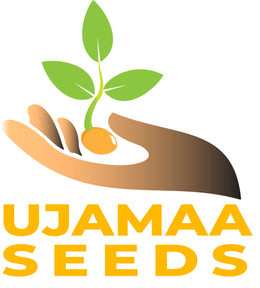Stinging Nettle
Sorry we have run out of stock for this item. Please check back later.
Urtica dioica
Seeds per packet ~ 60 Germination: 78% (Packed for 2024)
DISCOUNTED
Origins and History
Stinging Nettle is a perennial herb native to Europe, Asia, North Africa, and North America, where it has been valued for centuries as both a food and a medicine. Historical records from ancient Egypt describe nettle being used to treat arthritis, while Roman soldiers rubbed the leaves on their skin to stimulate circulation in cold climates. In Europe, nettle became a staple in traditional herbalism and cuisine, often appearing as a spring tonic after long winters. It is considered an heirloom variety because of its enduring presence in folk medicine, culinary traditions, and fiber production, where its strong stems were historically used to make textiles similar to flax and hemp.
Appearance and Characteristics
Stinging nettle is a tall, upright perennial that can reach between 3 and 7 feet in height. It is easily recognized by its serrated, heart-shaped leaves covered in fine, stinging hairs that release histamine and formic acid when touched, causing a brief stinging sensation. The plant produces small, greenish flowers in dense clusters from late spring to early fall. Nettle spreads vigorously through creeping rhizomes, forming large colonies in moist, nutrient-rich soil.
Culinary Uses
Once cooked or dried to neutralize its sting, nettle is highly nutritious and versatile in the kitchen. Young leaves are especially prized for soups, stews, teas, and as a spinach substitute in recipes like nettle pesto, omelets, or savory pies. Rich in iron, calcium, protein, and vitamins A, C, and K, nettle has long been valued as a spring green that nourishes and revitalizes after winter. The dried leaves are commonly brewed into herbal teas that are both refreshing and restorative.
Growing Tips
Stinging nettle thrives in USDA hardiness zones 3–10. It prefers moist, loamy soils with partial to full sun exposure and will often flourish along streams, woodland edges, and disturbed soils. Seeds can be sown directly outdoors in early spring or late fall, about ¼ inch deep. Germination may be slow and irregular, so consistent moisture is key. Once established, nettle is hardy and perennial, returning reliably each year and spreading readily, so it is best grown in a contained bed or designated area to prevent unwanted spreading.
Harvesting Guidance
For culinary and medicinal uses, harvest young nettle leaves in early spring before the plant flowers, as older leaves can develop coarse hairs and higher levels of irritants. Gloves and scissors should always be used to avoid stings when harvesting fresh leaves. Leaves can be blanched, sautéed, or dried immediately after harvest to remove their sting. Roots may also be dug in the fall for use in traditional herbal remedies. Regular cutting encourages fresh growth and helps manage the plant’s natural tendency to spread.




